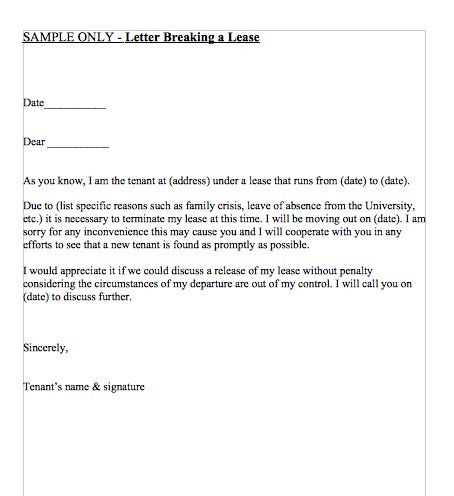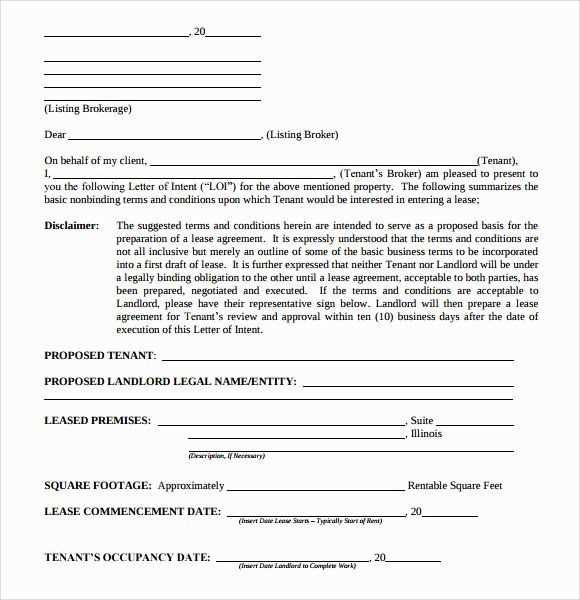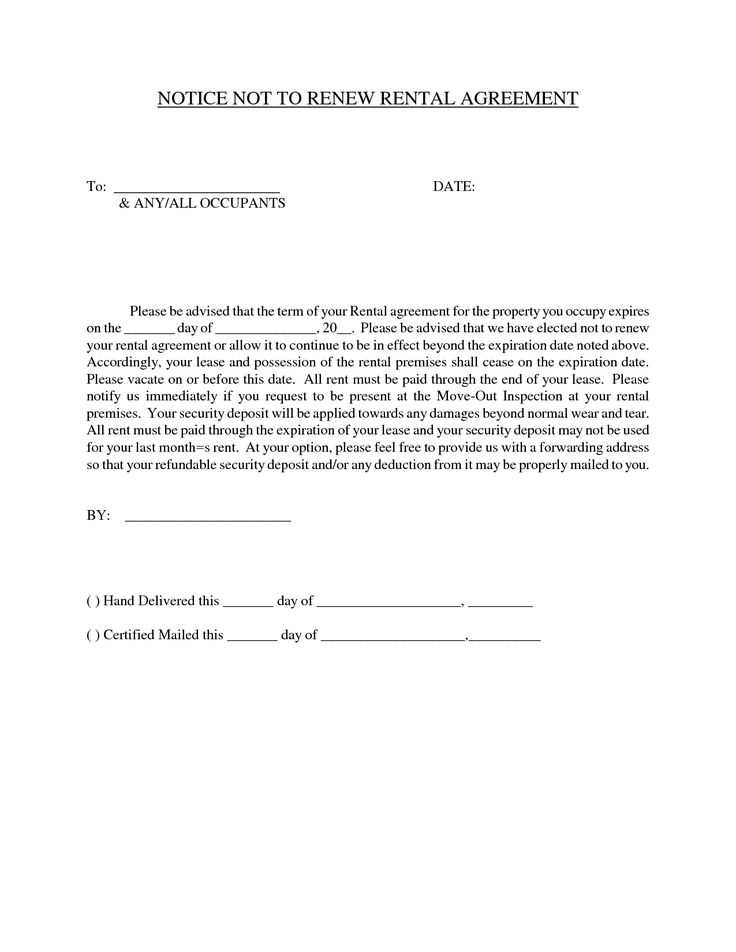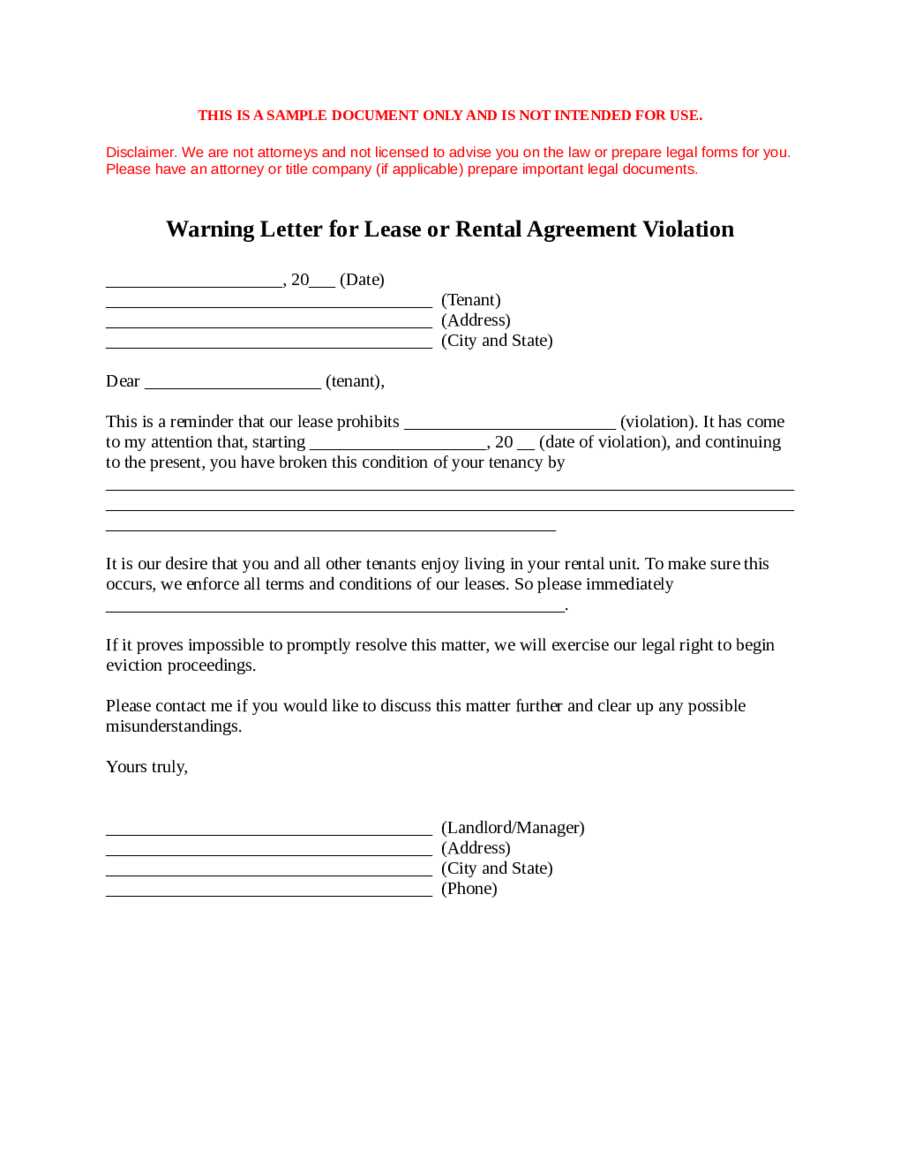Template for Writing a Letter to Break Your Apartment Lease

When you need to terminate your rental arrangement, it’s important to communicate your intention clearly and professionally. This ensures that both parties understand the situation, helping to avoid misunderstandings or complications. Writing a formal document to notify the landlord or property manager of your decision is a crucial step in the process.
Key Elements to Include in Your Notice

To ensure that your notice is effective, certain details should always be included. These elements provide clarity and help to maintain a respectful and transparent approach in your communication.
- Your Full Name and Contact Information: Clearly state your details at the top of the document.
- Date of Notification: Mention the exact date when you are submitting the document.
- Reason for Termination: While it’s not always required, stating your reason helps clarify your situation.
- Effective Date of Termination: Specify when you plan to vacate the property or end your contractual obligations.
- Forwarding Address: Provide your new address so the landlord can forward any final communications or deposits.
Legal Considerations Before Sending
Before you submit your notification, ensure that you review your original agreement for any specific clauses related to ending the contract. These clauses may outline notice periods or fees that must be adhered to. Consulting a legal professional may also be helpful in case of any confusion regarding your rights or obligations.
How to Send the Notification
The method of delivery can vary depending on your location and agreement. It is often recommended to send the notice via certified mail or another trackable method to ensure that it is received by the intended recipient. This also provides proof of delivery if needed later on.
What Happens After You Submit the Notice

Once your notification has been received, the next steps typically involve a final walk-through inspection of the property, the return of your security deposit, and the completion of any final paperwork. Be sure to stay in communication with your landlord throughout the process to resolve any issues smoothly.
How to Write a Rental Agreement Termination Notice
When you decide to end your rental commitment, it’s essential to formally notify your landlord or property manager in writing. This ensures clarity and sets expectations for both parties regarding the termination of the arrangement. A well-written communication can prevent confusion and facilitate a smooth transition out of the property.
Key Information to Include in Your Notice

In order to make your termination request clear and complete, certain details should always be included. These components are vital for ensuring that both you and your landlord are on the same page.
- Personal Details: Include your full name and current address at the top of the document for identification purposes.
- Date of Notice: Specify the exact date you are delivering the notice to the landlord.
- End Date: Clearly mention the date you wish to end the agreement, or when you plan to vacate the property.
- Reason for Ending the Agreement: Though not always necessary, briefly state why you wish to terminate the arrangement if you feel comfortable doing so.
- New Address: If applicable, provide your new address so the landlord can send any final communications or refunds.
Legal Considerations When Ending Your Commitment
Before submitting your notice, review your original contract to ensure you are complying with all terms and conditions. Many agreements specify a required notice period or stipulate penalties for early termination. Make sure you understand these provisions to avoid any legal issues or financial penalties.
If you’re uncertain about the legal implications, consulting with a professional or legal advisor can help clarify your obligations and rights, ensuring a smooth and lawful conclusion to the arrangement.
How to Deliver Your Termination Notice
It’s crucial to send your notice in a way that ensures the landlord receives it and has a record of its delivery. Consider using certified mail, email with read receipts, or hand-delivering the notice in person. These methods provide proof of receipt and can help avoid any disputes regarding whether or not the termination was communicated properly.
After you’ve sent the notice, it’s important to stay in contact with the landlord to coordinate the next steps, such as property inspections and the return of your security deposit. Clear communication will help prevent misunderstandings and allow for a smoother transition.